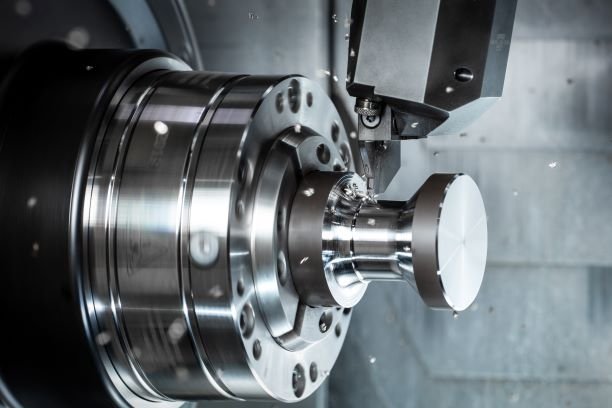
When Paul Horn introduced the type 312 indexable insert to the public in 1972, it was a small revolution in the grooving process. Horn was the first manufacturer ever to develop a tool system with a vertically mounted, three edged carbide insert for grooving. Today, the grooving process with indexable inserts is indispensable in modern manufacturing. Radial grooving, parting-off, face grooving and internal grooving to µ-precision are now part of everyday life in the machining industry. Paul Horn's incentive at the outset was for the technical perfection of his products and the Horn company continues to set similar standards in tool technology for this machining process.
The 312 insert is still popular with users today. Horn has not stopped developing and optimising successful product families. At the same time, Horn has completely integrated the value creation for its entire product range into its own production. The possible applications of the tool have grown considerably after the insert was originally used almost exclusively in the automotive industry. The "312" is intended for external machining and is used, among other things, for producing workpieces in the medical industry, in the manufacture of hydraulic components and for making everyday objects such as jewellery or ballpoint pens. However, it is not only the type 312 insert that has made the precision tool manufacturer known as a specialist for machining between the flanks. Numerous other tool systems followed the idea from 1972, which are now successfully used for grooving worldwide.
Basically, the grooving process involves a narrow cutting edge that penetrates the workpiece in a radial or axial direction. The art of grooving is, among other things, controlling the chip flow. Chip sticking, jamming or long, stringy swarf must be avoided in practice, as they have a negative influence on process reliability and can lead to tool breakage and damaged flanks. Depending on the material to be machined and the type of machining, Horn has developed different chipbreaker geometries that ensure reliable chip formation, control and breakage. Another important point for economical grooving is a sufficient supply of coolant. Where in the past cooling was external with the classic flood coolant, today modern tool carriers are used, mostly with an internal coolant supply. This ensures effective cooling of the shear zone between the tool cutting edge and the workpiece. For parting-off, Horn also offers a type S100 insert, which supplies the contact zone with coolant at high pressure directly through the insert. Tools are exposed to high loads during parting-off. The quality of the carbides used, the quality of the cutting edge and the insert coating also play an important role in reliable and economical parting-off.














